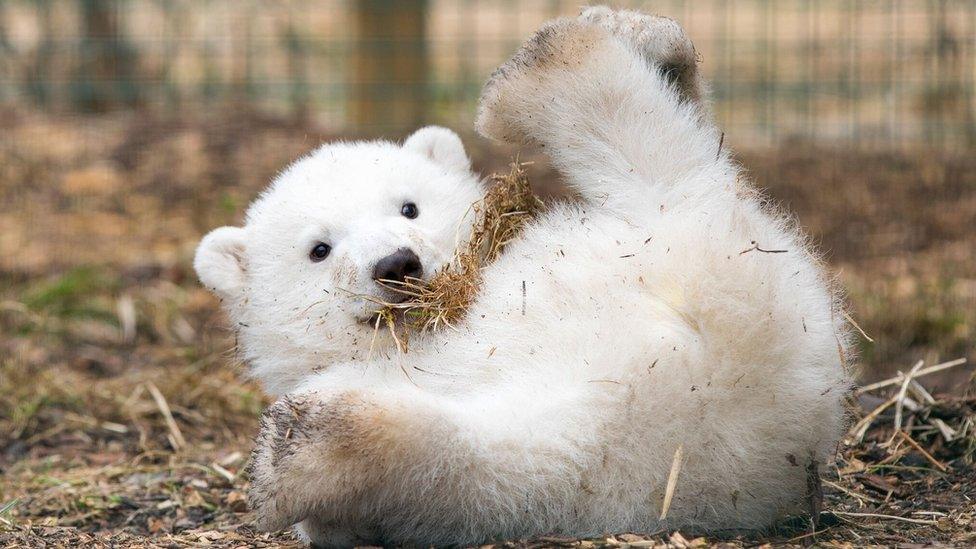Polar bears: Animals adapt to hunt without sea ice
- Published
- comments
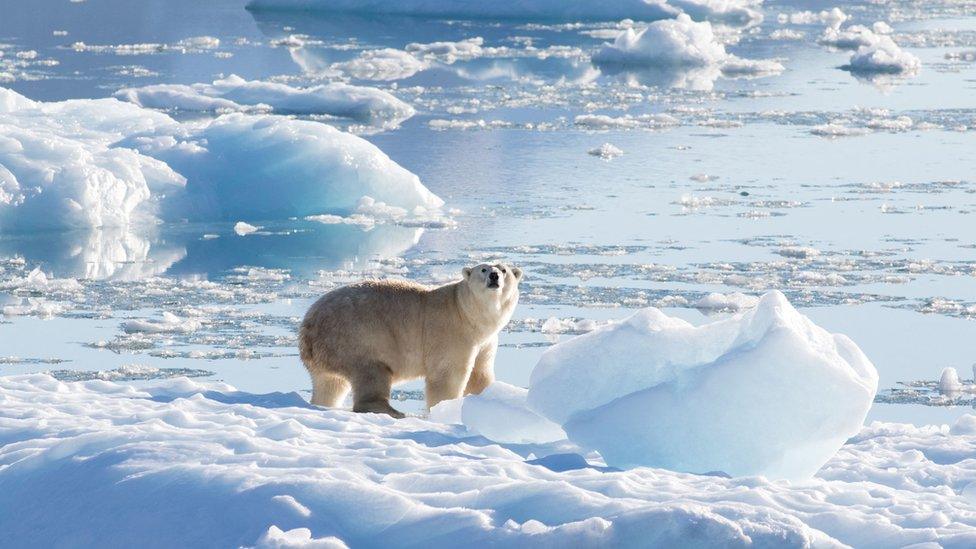
A group of polar bears in a part of Greenland now hunt seals from frozen freshwater instead of Arctic sea ice
Polar bears in Greenland are now adapting to hunt without sea ice, according to experts.
A group of several hundred bears on a part of the island are now hunting seals from freshwater ice instead.
Scientists say it's good news as it means the species has a better chance of survival despite the impact of climate change and rising temperatures.
The bears live on ice sheets and rely on Arctic sea ice to to catch their seal prey - so the melting ice puts the species at risk of extinction.
What did scientists find?
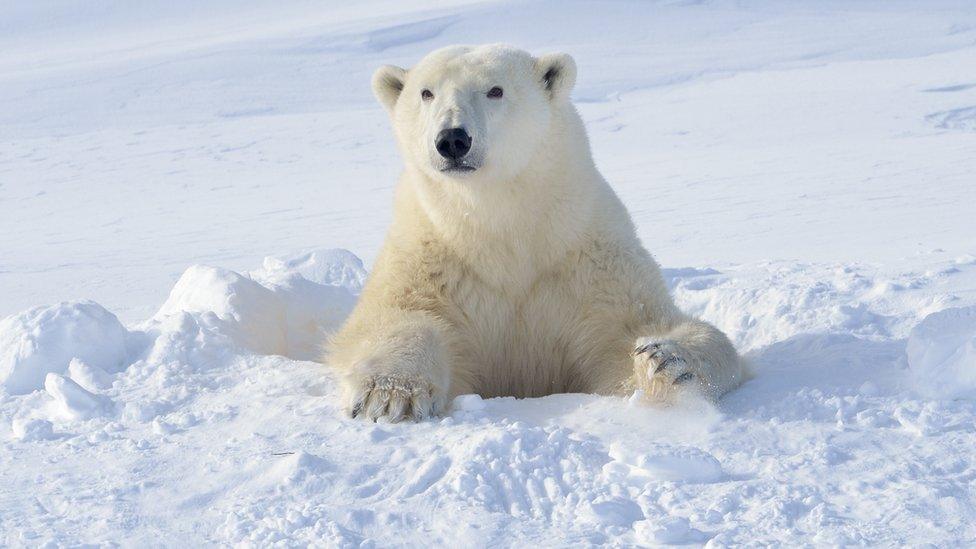
There are thought to be around 26,000 polar bears on the planet
The research team from the University of Washington in America spent two years interviewing Inuit hunters in Greenland, who shared their ecological knowledge of the area.
Travelling to the remote region using helicopters, they tagged the bears with satellite tracking devices and collected genetic samples.
Researchers found the animals were using ice that breaks off glaciers.
Polar scientist Kristin Laidre, who led the study, said: "They survive in fjords that are sea ice-free more than eight months of the year because they have access to glacier - freshwater - ice."
Polar bears aren't really white! They have black skin beneath all that fur, which is actually see through. They only appear white because their fur reflects the light.
Despite the positive news, experts say that global warming is still an urgent issue.
Dr Beth Shapiro, who was also involved with the study, said that polar bears remain "in trouble".
She added: "It is clear that if we can't slow the rate of global warming that polar bears are on a trajectory to become extinct.
"The more we can learn about this remarkable species, the better able we will be to help them to survive the next 50 to 100 years."
- Published20 January 2020
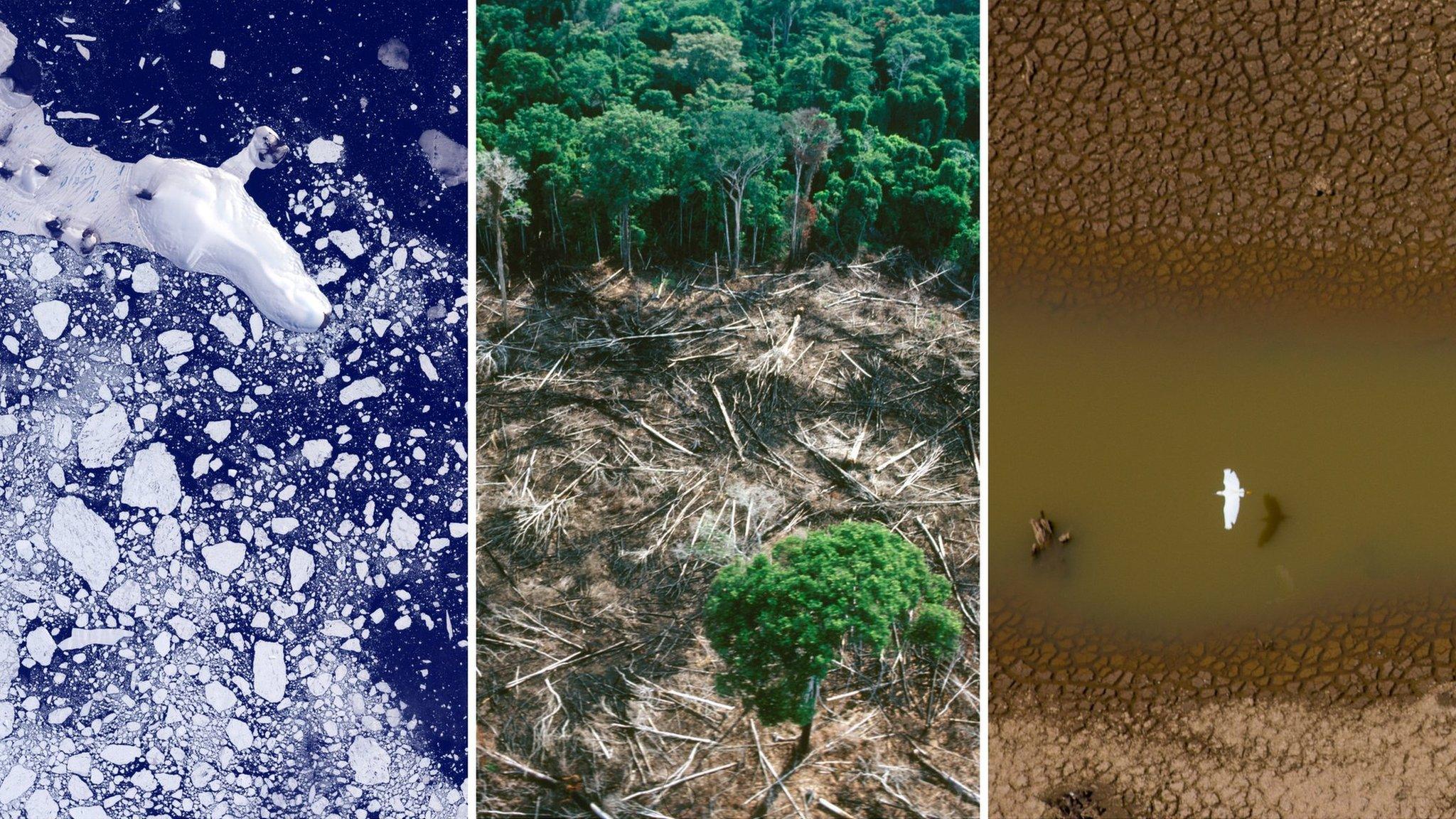
- Published24 April 2020
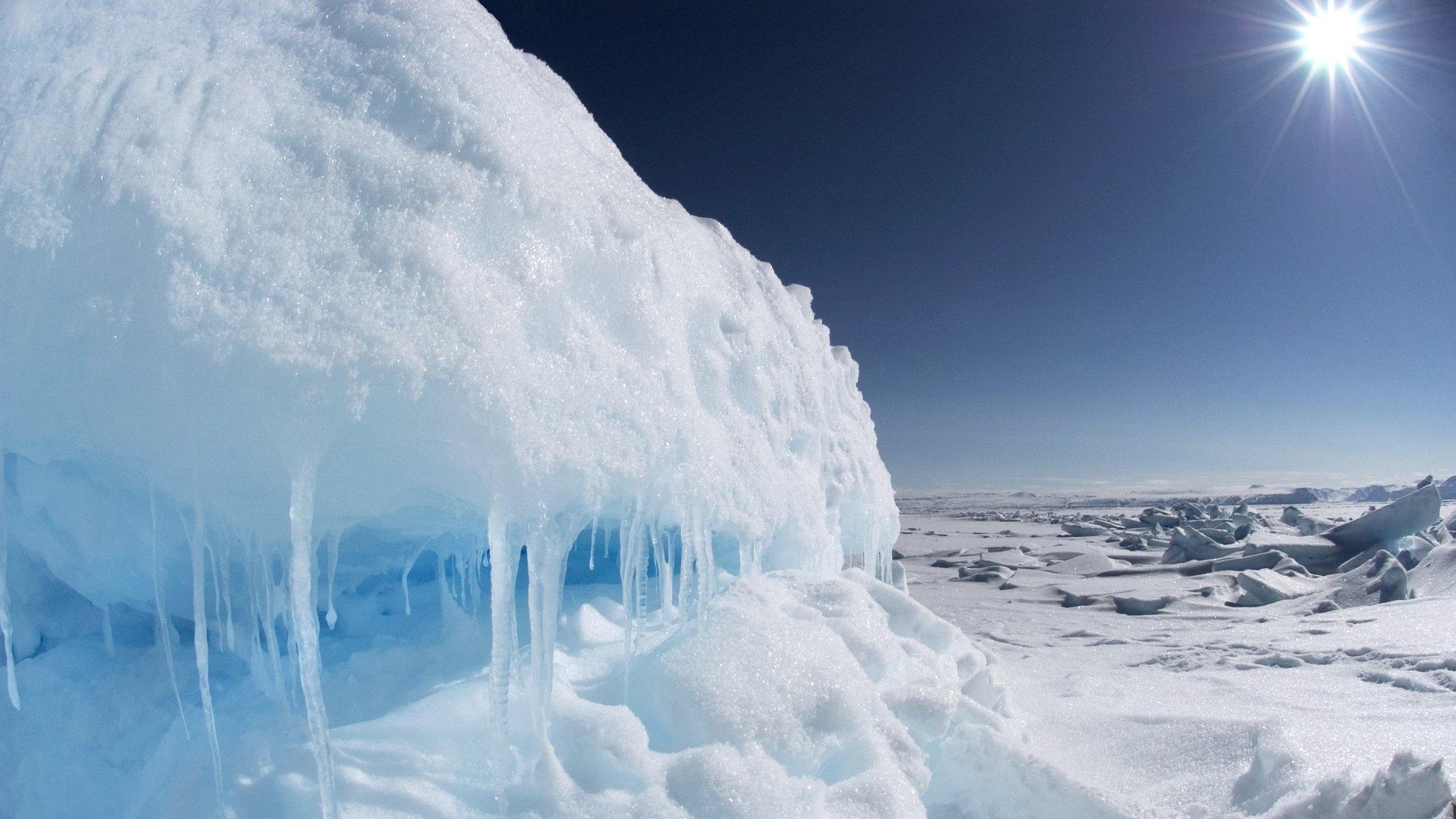
- Published18 August 2020
